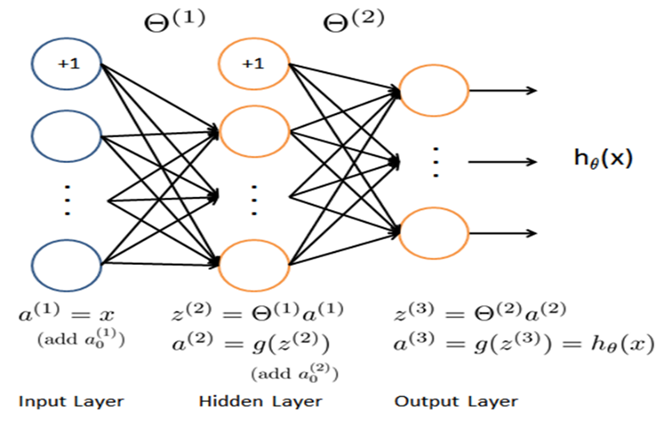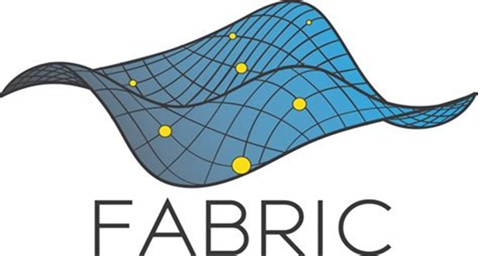RIT | Rochester Institute of Technology
Networking and Security Research Group
Project 1: Machine Learning and Network
Research on the NSF FABRIC Testbed
The RIT
Network Research team is combining machine learning techniques and topologies
built on the NSF funded FABRIC infrastructure in order to address networking
and security challenges. These are important research areas but equally
important is developing the related student skills and knowledge.
Current
experiments require machine learning nodes containing models, datasets for
training, and a workflow moving a trained model to an operating topology housed
on the virtualized testbed. This operation and the components embody a
collection of advanced concepts that can make it difficult for students to
seamlessly join machine learning-based projects. While students understand many
of the fundamental components (networking, virtualization, coding, machine
learning), research work performed on a complex FABRIC infrastructure is much
larger in size and scope.
This
project seeks to engage a pair of students in our current machine learning,
networking, and security work in order to determine what they need to learn and
what entry-level skills they should possess. This information will be used to
prepare the next generation of students working on this or related projects. It
will also provide needed input to future funding proposals.
 Specifically, the goals of this project include:
Specifically, the goals of this project include:
●
Have students work from start to finish on a project housed in FABRIC in order
to understand and document the student perspective. This will enable us to
better understand important prerequisite knowledge and what learning experiences
must be created.
●
Outline a project plan and operational requirements for externally funded
solicitations such as those found in the NSF NetS
program which involves both I-School and NTID students.
Current
research questions under examination include:
●
Packet classification via neural network ensembles
● ARP
poisoning and adversarial attacks
●
Connectivity outages and topology management
●
Dataset creation

NSF FABRIC
(FABRIC is Adaptive ProgrammaBle Research
Infrastructure for Computer Science and Science Applications) is an
International infrastructure that enables cutting-edge experimentation and
research at-scale in the areas of networking, cybersecurity, distributed
computing, storage, virtual reality, 5G, machine
learning, and science applications.
The FABRIC
infrastructure is a distributed set of equipment at commercial collocation
spaces, national labs and campuses. Each of the 29 FABRIC sites has large
amounts of compute and storage, interconnected by high speed, dedicated optical
links. It also connects to specialized testbeds (5G/IoT
PAWR, NSF Clouds), the Internet and high-performance computing facilities to
create a rich environment for a wide variety of experimental activities. FABRIC
Across Borders (FAB) extends the network to 4 additional nodes in Asia and
Europe.
An Experiment Topology and FABRIC Resources

Current Undergraduate Researchers
Gavin Hunsinger
·
Fourth Year
Computer Information Technology Student
·
Strong
interest in networking and cyber security
·
Utilized
FABRIC's virtual Testbed to collect data and experiment with FRRouting
·
Created
Python scripts to gather telemetry data and parse Wireshark packets
·
Started
developing a neural network to classify types of packets
·
Python
tools: pytorch, CUDA
Faria Sultana
·
2nd year
student majoring in Computing and Information Technology, interested in
networking and system administration.
·
Used the Fablib API to build layer 3 topologies, wrote Python
scripts to conduct bandwidth testing, documented the process
·
Collected
packet datasets and preprocessed them to be injected into a neural network model
·
Learning
how a neural network works and how we can improve on it
New team
members
Zachary Riback and Jonathan Bateman
Previous team members
Amira Chhaiouine
·
Undergraduate
rising third year cybersecurity student.
·
Highly
interested in cybersecurity, networking, and machine leaning
·
Utilized the
FABRIC virtual testbeds to create L2 and L3 topologies and performing different experiments
·
Tools: iperf, nmap, FRRouting,
ping, traceroute, Wireshark
·
Creating
python scripts to gather telemetry data in order to parse Wireshark packets.
·
Began the
development of a neural network to classify packet types.
Faculty Investigators: Bruce Hartpence, Daryl Johnson, Bill
Stackpole
Contact: bhhics@rit.edu
Project sponsors: RIT Research Computing and the Golisano College of Information
Sciences
Project 2: RIT Network and Security Dataset Repository
The lack of
quality datasets is a critical problem that limits machine learning
experimentation in the areas of intelligent networks and security. This
collection of datasets contains packets from a variety of contemporary (2020
onward) layer 2, layer 3, layer 4 and application layer protocols. It is a
growing series of curated and un-curated datasets for both general network
classification experiments and security investigations. The curated datasets
are used as part of our machine learning classification work and the collection
contains some details on model structure and baseline accuracy for comparison.
This
collection contains curated (ex. enforced balance) and non-curated (raw)
datasets in several formats.
This works
was recently published in the International Symposium on Networks, Computers
and Communications (ISNCC'24)
Links:
Network
datasets: https://repository.rit.edu/data/1/
When
referencing the networking datasets, please use the following DOI:
10.57673/gccis-yg55 OR www.doi.org/10.57673/gccis-yg55
Security
datasets: https://repository.rit.edu/data/2/
When
referencing the security datasets, please use the following DOI:
10.57673/gccis-qj60 or https://doi.org/10.57673/gccis-qj60
Contact info:
Bruce Hartpence bhhics@rit.edu
Daryl Johnson dgjics@rit.edu
Bill Stackpole wrsics@rit.edu